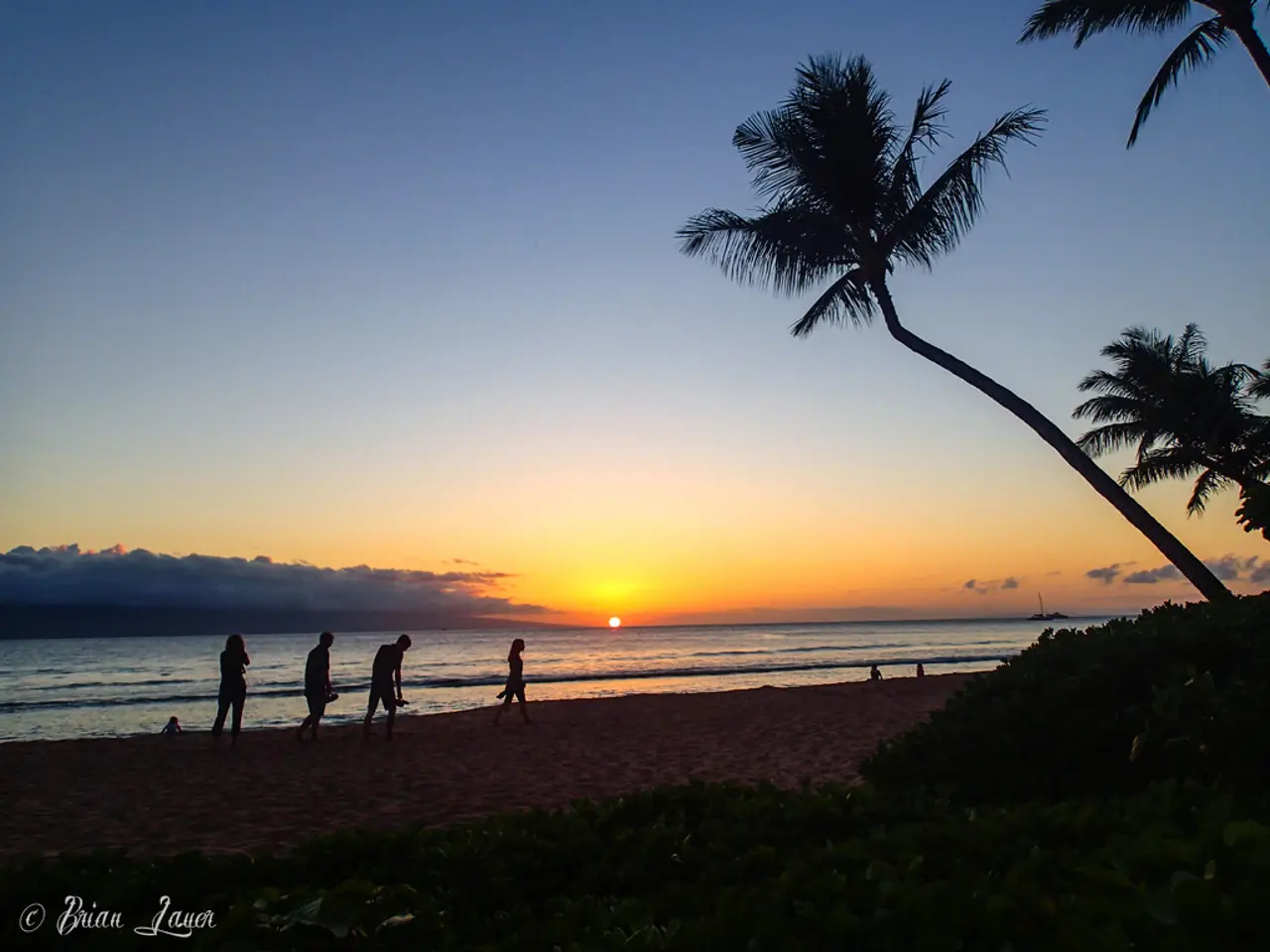Perpetual Daylight Scenario: Implications of a Constant Sunlit World
In an intriguing exploration of hypothetical scenarios, scientists and researchers have been pondering the potential impacts if Earth were to cease its rotation, resulting in a world without a 24-hour day-night cycle. This thought-provoking concept would transform our planet drastically, with far-reaching consequences across environmental, societal, and health domains.
Environmental Impacts:
The Earth's rotation plays a crucial role in global climate patterns and ecosystems. If the rotation were to stop, half the planet would be locked in perpetual daylight while the other half would remain in constant darkness for extended periods. This would disrupt atmospheric circulation and ocean currents, as day-night temperature differences drive winds and weather systems. The dark side would cool drastically, possibly freezing, while the illuminated side would overheat, potentially creating harsh deserts or boiling oceans.
Immense geological stress could also cause widespread earthquakes and tsunamis as the sudden halt would unleash massive inertial forces on the planet’s surface and oceans, throwing material eastward at thousands of kilometers per hour.
Societal Impacts:
The destruction from the initial stop would be catastrophic, destroying infrastructure and cities due to inertia and geological upheaval. Societies would face immense challenges adapting to uninterrupted daylight or darkness, which would affect agriculture, energy consumption, and human activity cycles. The breakdown in weather and climate patterns would disrupt food production worldwide, leading to food insecurity. Technological infrastructure reliant on satellite communications could also be affected by altered space weather phenomena, as persistent daytime ionospheric irregularities might degrade satellite signals.
Health Impacts:
Human circadian rhythms depend on regular light-dark cycles. Constant daylight or darkness would cause severe disruptions in sleep, hormonal balance, and mental health, leading to increased rates of fatigue, depression, and other disorders. Plant and animal species depending on day-night cues would suffer, threatening biodiversity and ecosystem services humans rely on.
Lessons From the Land of the Midnight Sun:
Countries in the Arctic Circle, such as Norway and Sweden, experience extended daylight during summers. Their experience offers insights into coping mechanisms, including blackout curtains and lifestyle adjustments. However, these are temporary phenomena, and the long-term impacts of constant daylight or darkness are still largely unknown.
In summary, stopping Earth's rotation would cause immediate apocalyptic destruction from inertia and seismic activity, followed by long-term climatic collapse with extreme temperature dichotomies, ecosystem collapse, societal disruption, and widespread health effects from loss of natural circadian rhythms. The scenario is catastrophic and incompatible with current life as we know it.
References: [1] Teller, A. H., & Grinspoon, D. (2004). The Search for Life in the Universe. Basic Books. [2] Lackner, J. M. (2013). The Science of Space Weather. John Wiley & Sons.
- In the realm of workplace-wellness and health-and-wellness, the disruption of regular daily light-dark cycles could lead to increased instances of mental-health issues due to sleep irregularities and hormonal imbalances.
- With climate-change already a significant concern, the potential implications of a stationary Earth are alarming, as half the planet could experience freezing temperatures while the other half faces unbearable heat, disrupting environmental-science studies and global weather patterns.
- Fitness-and-exercise regimes could also be impacted, as the absence of a 24-hour day-night cycle might affect the workability and performance of various therapies-and-treatments relying on light cycle therapies and natural circadian rhythms.
- To better understand the effects of extended daylight or darkness, research could focus on ecosystems like those found in the Arctic Circle and the environmental-science behind them, such as countries like Norway and Sweden, to develop strategies for adaptation and mitigation of related health and societal impacts.
- As we delve deeper into the unexplored territories of space and astronomy, understanding the potential consequences of such hypothetical scenarios becomes crucial in our quest to develop sustainable, long-term plans for human survival and exploration – be it on Earth or beyond.




